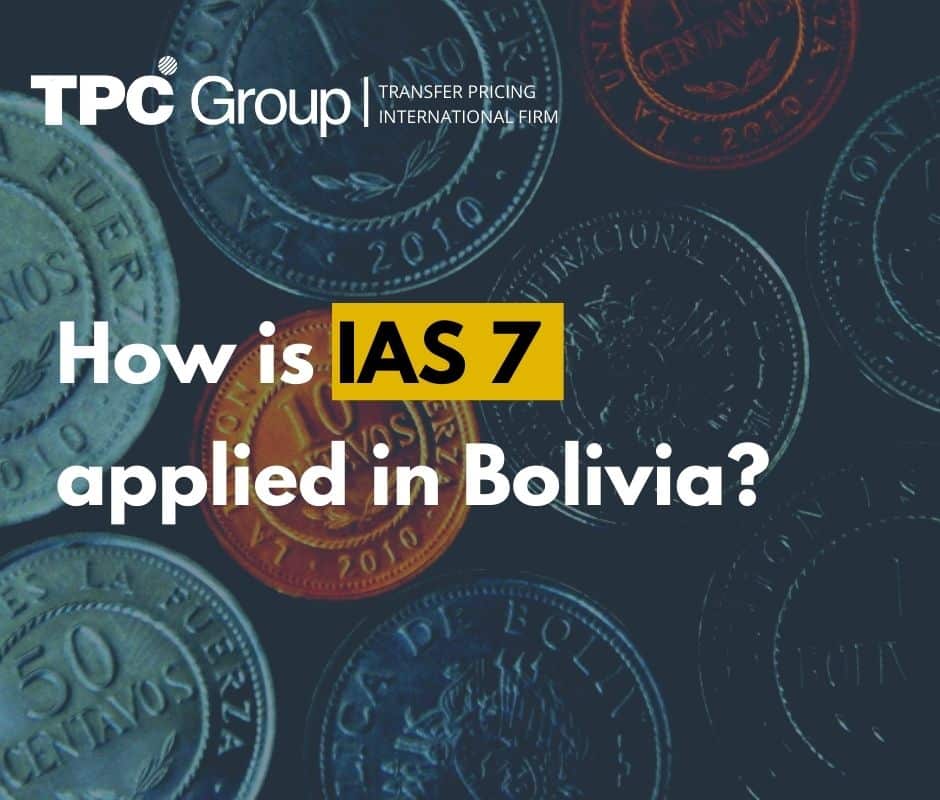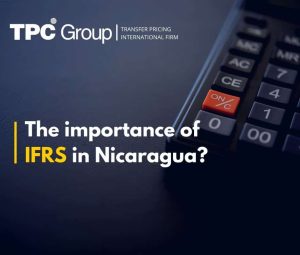Regulatory Framework for the IAS 7 Implementation
Bolivia is in the process of convergence through the International Financial Reporting Standards (IFRS) implementation issued by the International Accounting Standards Board to prepare general purpose financial information to follow the world trend and global business dynamics.
Thus, due to its convergence process, the CTNAC (Consejo Técnico Nacional de Auditoría y Contabilidad – National Technical Council of Auditing and Accounting) established the technical normative framework through Resolution No. 01/2012 of November 7, 2012, remaining in force the fourteen (14) Generally Accepted Accounting Standards for Bolivia, issued by the CTNAC of the CAUB (Colegio de Auditores o Contadores públicos de Bolivia – Bolivian Association of Auditors or Public Accountants) and implementing the IFRS as supplementary or complementary standards to be applied in the absence of specific technical pronouncements of the country or local regulations on certain matters.
In this regard, Accounting Standard No. 11 (AS No. 11) on Essential Information Required for an Adequate Presentation of Financial Statements requires companies to file a complete set of financial statements, including the statement of cash flows, in which the definition of the statement of cash flows is set forth:
It is a basic dynamic financial statement that presents the cash flow (refunds and disbursements) of cash and cash equivalents, or changes in the entity’s resources from operating and investing activities.
However, this standard does not establish the cash flow statement process. Therefore, IFRS are substantially implemented due to insufficient technical accounting pronouncements in the current accounting standards, applying IAS 7 to prepare and file the cash flow statement.
The International Accounting Standard No. 7 (IAS 7) requires the provision of information about historical changes in an entity’s cash and cash equivalents through a cash flow statement in which funds flows for the period are classified according to whether they arise from operating, investing, or financing activities.
What are cash flows?
Cash flows are the cash inflows and outflows, mainly resulting from the production and sales of goods and/or services intended to generate profits.
IAS 7 establishes the following definitions:
- Cash flows are the inflows and outflows of cash and cash equivalents.
- Cash comprises both cash and demand bank deposits.
- Cash equivalents are short-term, highly liquid investments easily convertible into specific amounts of cash subject to an insignificant risk of changes in value.
Cash flow classification under IAS 7
The cash flow statement shall report cash flows during the period, classifying them by activity:
- Operating activities are those constituting the entity’s main source of income, as well as other activities that cannot be classified as investing or financing ones.
- Investing activities are those of acquisition and disposal of long-term assets, as well as other investments not included in cash equivalents.
- Financing activities are those resulting in changes in the size and composition of the entity’s equity and loans.
What are the operating activities?
- Activities.
- Collections from sales of goods and services.
- Supplier payments.
- Employee payments.
- Collection of royalties, commissions.
- Profit tax payments or refunds.
- Collections and payments from insurance companies for premiums.
What are investing activities?
- Purchases of fixed assets, intangible assets, and other long-term assets, represented by cash payments.
- Collections from fixed asset sales, intangible assets, and other long-term assets.
- Payments and collections for advances and loans to third parties (non-financial entities).
- Payments and collections for the acquisition and sales of investments.
What are the financing activities?
- Increase or decrease of capital.
- Collection from the issuance of shares or other financial instruments.
- Payments for acquiring or redeeming shares.
- Collections from the issuance of financial obligations, loans, promissory notes, bonds, mortgages, and other short and long-term loans.
- Loan repayments.
- Financial lease reimbursements.
Types of cash flow
- Direct method
- Greater detail of operating revenues, collections, and payments.
- The information IS OBTAINED from accounting reports.
- Sales or cost of sales are adjusted for:
- Changes during the period in inventories and accounts receivable and payable operating.
- Other non-cash items.
- Indirect method
- Net profit or loss is adjusted for:
- Non-cash transactions (e.g. depreciation).
- Income or expense items with investing or financing cash flow.
- Net profit or loss is adjusted for:
Which cash flow method to use?
According to tax regulations, the statement of cash flows must be prepared using the indirect method, specifically because the latest updated digital form 605, corresponding to the SIAT (Sistema Integral de Administración Tributaria – Integral Tax Administration System) APPLICATION – FINANCIAL STATEMENTS and ANNUAL REPORT MODULE includes the Cash Flows format in the indirect method.
Therefore, the choice of the method to be used will depend on the entity’s goals.




